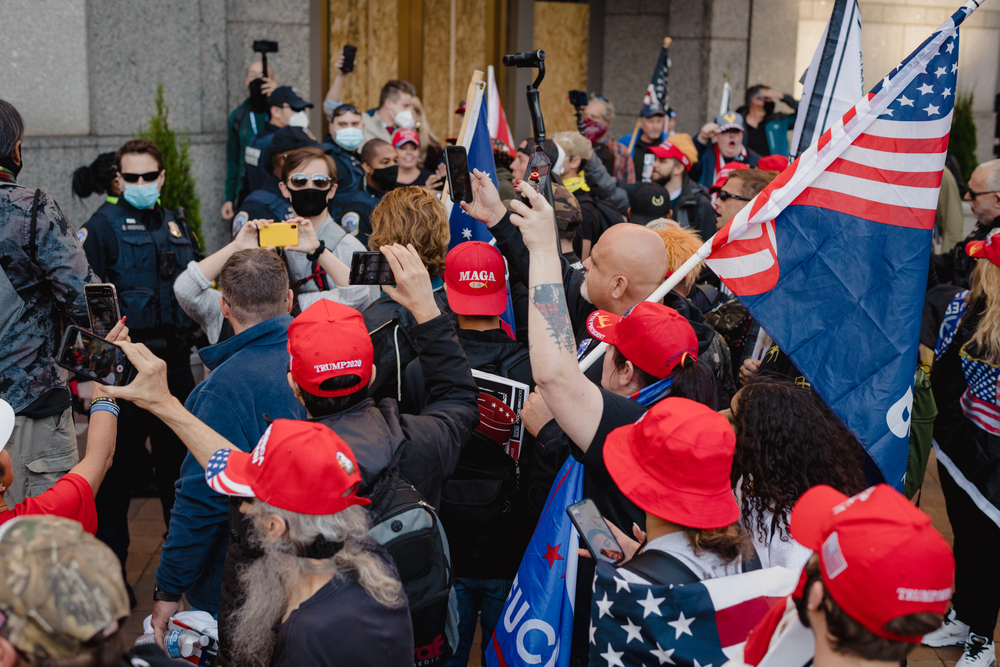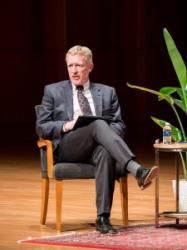It’s become a commonplace observation that while we are indeed a divided nation, we have been divided before and, some claim, in much worse ways.
The first part is undoubtedly true, while the second seems more debatable, and this particularly in light of a recent poll coming from the Center for Responsive Politics (CRP) at the University of Virginia that shows roughly half of Americans on both sides of the political spectrum seriously indulging fantasies of secession. Along those lines, and more disturbingly, even higher percentages of respondents viewed members of the other party as presenting a “clear and present danger” that will likely result in “personal loss or suffering.”
I’m not familiar with any polling data extant during other periods of divisional crisis, but the fact that roughly half the country would make no effort to keep the other half from seceding—indeed, would happily defenestrate them—ought to make one nervous. This nervousness intensifies when one considers that the CRP poll claims that 62% of Biden voters and 88% of Trump voters would support “a powerful leader” who would “destroy the radical and immoral currents prevailing in society today.” Those “currents” will have names and faces, making it hard to imagine how such destruction could be accomplished without violence.
The dissolution into factional violence, as the writers of our Constitution realized and feared, has always been one of the dangers that dog republican systems of government. Since, as Madison observed, “the seeds of dissension are sown into the nature of man,” and such sowing is a “reflection on human nature” that doesn’t admit of alteration without “liberty [being] lost in the pursuit,” our constitutional system attempts to manage and even channel disagreement in constructive ways. The extension of the sphere of politics, both demographically and geographically, would make our politics more temperate and make the formation of tyrannies that “vex and oppress” others unlikely.
One wonders what Madison would make of the age of mass and social media. The complex system the Founders developed assumed that people of similar interests would be unlikely to find each other and discover their particular conception of the good that would have a greater claim on their allegiances than a commitment to the common good. Not only geographic separation but the attendant complications of close-up communication would mean, Madison argued, that “by their number and local situation” partisans would be “unable to concert and carry into effect schemes of oppression.” The capacity to tyrannize thus dissipated, the regime could actually be maintained and stabilized by the clash of competing interests. It is obvious by now that the combination of hypermobility, extant settlement patterns, and the toxic media environment have rendered the constitutional system largely toothless in its ability to both guard our liberties and buttress any underlying commitment to a genuinely common good.
It’s difficult to imagine how such commitment might be reanimated. I recently argued that our failure to produce leaders who could bridge our divides reflects our more fundamental inability to maintain a shared culture. Only by borrowing on that shared culture was Lincoln able to appeal to “the better angels of our nature” that would allow us to recognize each other as “not enemies, but friends.” A just regime, Aristotle observed, demanded a mode of civic friendship wherein individuals could, when required, sacrifice their personal goods and interests in favor of the whole. Such favoring requires an understanding of the whole and one’s place in it, as well as a love for it. Liberal regimes place an additional burden on its citizens: namely, a skepticism concerning one’s own ability to understand what is best, and a concomitant generosity toward an opponent’s ability to understand. Without such self-doubt and “malice toward none with charity for all,” American democracy becomes vicious.
Those virtues are rarely on display in our contemporary politics. Americans increasingly live separated lives wherein they have little interaction with people who disagree with them, allowing them convenient caricatures of their opponents. We selectively read media sources that confirm our biases rather than challenge them, and we live in social media echo chambers that, we are finding out, have a capacity to destroy lives and livelihoods, deepening the fear we have of one another. We have increasingly settled into blue regions and red regions. Even seemingly benign social markers indicate our divides: Tell me what someone watches on Netflix or show me how that person spent the weekend and I’ll tell you how that person voted in the last election.
The CRP study reinforces what the Pew Foundation discovered previously—namely, that it is OK for politicians to regard opponents not only as misinformed but also as anti-American and even evil. Our ideas of patriotism have devolved in troubling ways such that in the imperative to “love the whole,” we can’t agree on what that whole is, or what part it should play in the larger whole of the so-called global society, which itself has become a source of serious political division. If indeed globalization is an ineluctable force that divides America into winners and losers, that force will likely strain domestic politics to a breaking point. When Americans are taking less pride in their country than are Germans, French, or Brits—and take less pride than we used to—we might well ask what, if anything, might hold us together.
Theorists often talk about America as an experiment in liberal democracy. We are all too familiar with the weaknesses of the democratic parts: mob violence, factional dissolution, gridlock, and instability. America’s success has partly hinged on the liberal elements of the equation, and here the CRP poll gives us a something of a blueprint for moving forward. The liberal tradition has long favored the demands of practical reason over theoretical reason, and this in the context of a pluralist situation where people will often disagree about the nature of the good itself. Given such disagreement, order is maintained by mutual forbearance, an unwillingness to use the instruments of coercion that you know can be used against you in turn. Where agreement about ends can’t be achieved, individuals and parties agree to “stand down” and, in so far as it’s possible, go their separate ways. When agreement can be achieved, the involved parties have all the liberty and energy at their disposal to move forward. Liberalism requires this sort of reasonableness as regards mutually beneficial exchanges and actions.
In other words, American constitutionalism works best when it focuses neither on ultimate ends and purposes or unduly on the self’s own demands. It works best when we are engaged in practical projects that reflect shared interests. Here, as I said, the CRP report gives us reason for hope, and also a playbook that parties might want to consult. The report (see Table 1) gives evidence of high levels of agreement concerning things that are demonstrably public goods: energy systems, infrastructure, and delivery of necessities such as clean water and food. This consensus begins to break down when we get to what have long been culture war sorts of battles: family life and education.
So long as Americans can remain focused on the material well-being of households, which are properly the germ of political life, there is hope in our perilous moment. Conversely, focusing on individuals or contesting ultimate goods will exacerbate our divisions. Those who insist on either might come to regret the unleashing of the forces of violence with which they flirt.

